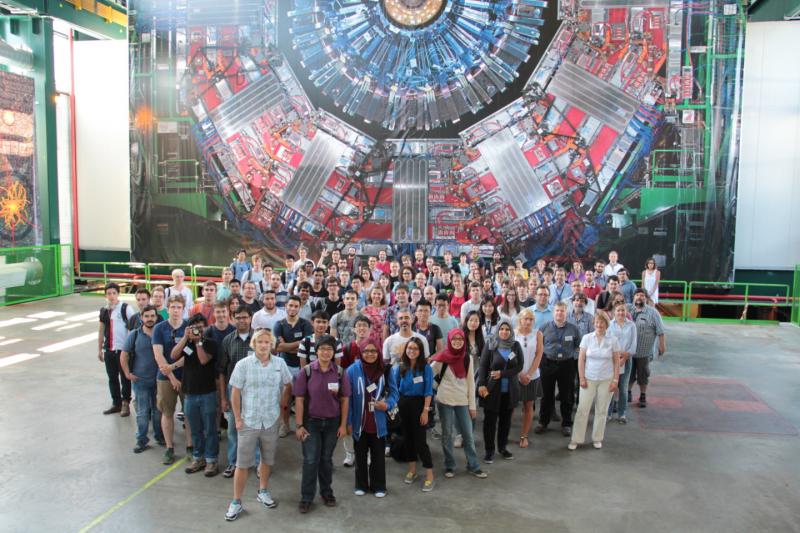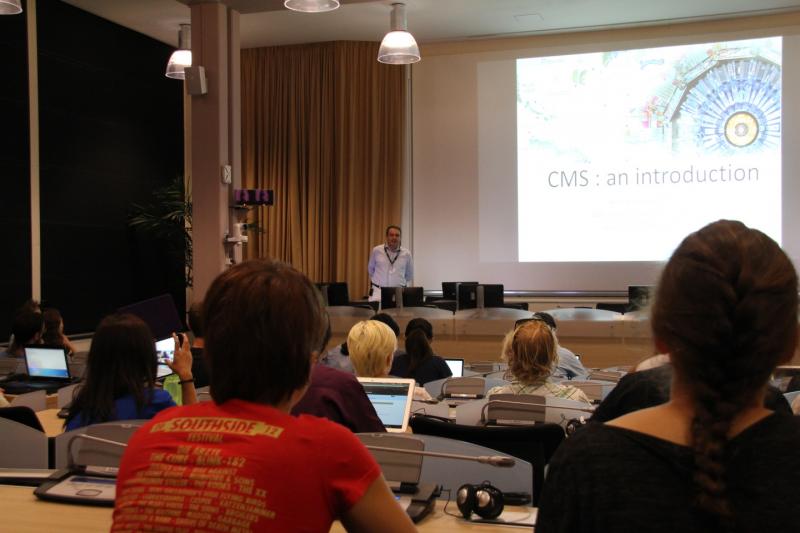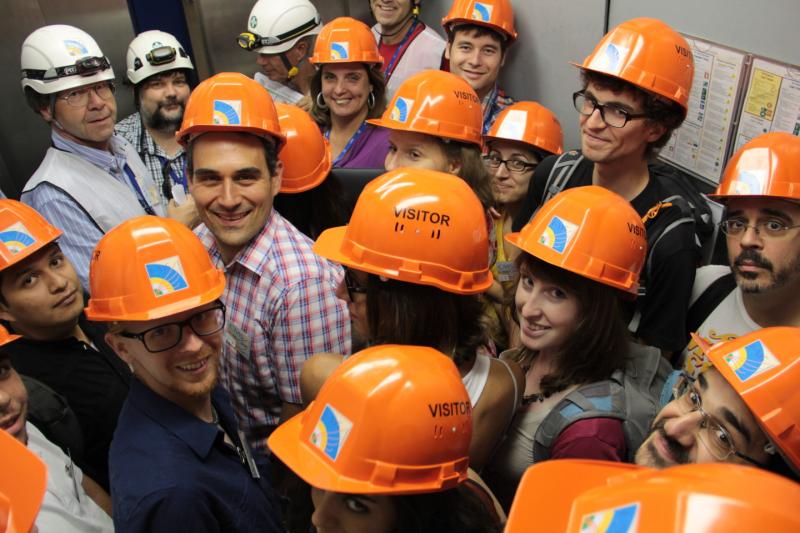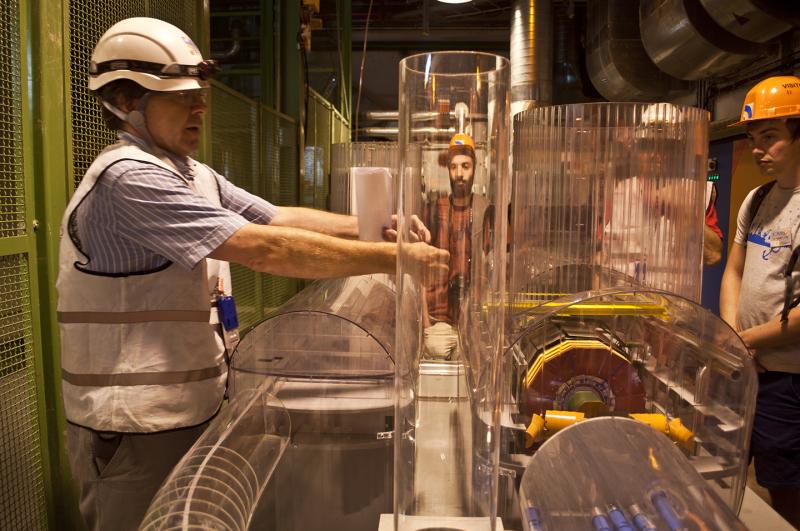CMS organised a special introductory session for newcomers and young members of our collaboration on 17 and 18 July. Two PhD students, Juska Pekkanen (Helsinki Institute of Physics & University of Helsinki) and Nairit Sur (Tata Institute of Fundamental Research, Mumbai), recount their experience in this guest post.
Nairit: Being a part of a collaboration like CMS is an unparalleled experience. Once you get over the initial amazement at the enormity of the project and slowly get to know more and more about the nitty-gritty of its working, you cannot help but wonder how exactly this immensely complex system with so many components, each with its own distinctive features, is managed and run in a smooth, coherent manner.
Juska: When I first heard about the CMS induction course at a project meeting back in Helsinki, I thought, “This is a great idea but it’s a pity that there wasn’t one when I started working for CMS as a summer student back in 2011.” Now, after attending the course as a fresh PhD student, I realise that even those of us with some experience with CMS have a lot to gain from such a course. When working with a giant like CMS, a couple of years is not nearly enough to get familiar with the myriad parts of the detector, not to mention the workings of the colossal 4000+-person collaboration. The newcomers’ course helped me a great deal in understanding the big picture.

Nairit: Our spokesperson Tiziano Camporesi set the pace on the first morning of the one-and-a-half-day session with a detailed introduction to CMS. Starting with the history of the collaboration, he described the physics objectives, the magnet system and sub-detectors and the measurement of particles, before discussing the future of the detector and collaboration. He also introduced us to the functioning of the LHC, data acquisition and event reconstruction. This was followed by two sessions on tracking and calorimetry in CMS. Both the talks were very informative for a new PhD student like me. I had personal interactions with the speakers after the talks and got valuable inputs.
Juska: I have never seen our sub-detectors introduced with such depth and detail, accompanied with plenty of interesting anecdotes and pictures of how things actually look like. Of course, all this info is available in various public sources, but you don’t just go and read this kind of stuff from the 1000+-page technical publications, it needs to be pre-chewed to be somewhat understandable in one go. The flow of information was fierce and pace quite fast so I could not grasp all of it right away, but for that I downloaded the slides from the course’s website for future reference. I’m sure they’ll prove invaluable when I need to describe the experiment in depth in my thesis!

Nairit: A clear highlight of the session for me was the visit to Point 5. After a sumptuous lunch, we were divided into groups and taken on a special tour of the underground caverns. And it was amazing. I have never seen our detector before and lapped up the opportunity presented. Our expert guides answered all our queries to the last detail with numerous trivia and anecdotes.

Juska: Although I’ve been lucky enough to have been down to the CMS underground cavern before, it’s always a breathtaking experience to witness the sheer size and beauty of the detector. This visit was also special because it was obvious from the beginning that our colleagues had done their best to give us a thorough and entertaining tour. The CMS Technical Coordinator Austin Ball, who was one of our guides, seemed to have a funny fact or two about every part of the cavern and the detector itself in his sleeve, from how the coiling of the lowering cables was especially engineered for CMS to avoid too much pendulum oscillations in the narrow shaft to why the parts where the beam pipes join and separate at each side of the experiment have the technical name POP; POP stands for Pair of Pants of course, and the parts are called that because they resemble, well, a pair of pants (or trousers, if you prefer).


Nairit: The underground visit was accompanied by a tour of the surface facilities such as the helium cooling station, magnet quenching resistors and the Control Room. It was really exciting to experience the complexity of the engineering marvel that is CMS. We also had lectures on CMS Run Coordination and safety, both of which provided a lot of practical information.

Juska: The next morning, we had lectures on practical stuff such as how data analysis at CMS works, how papers and results get published, how a physicist can take part in analyses he or she is interested in and how to organise one’s tasks to get the best out of a working day.
Nairit: Overall, I had a fantastic experience and I’m sure it will be very helpful for everyone in the following years. I would like to thank the organisers for putting together a great event.
Juska: I learned a great deal about the collaboration and the experiment, got a lot of perspective on how things actually get done both at the bureaucratic level and down in the experimental cavern itself, and also made some new friends in the process! These induction sessions should definitely be put together once or twice every year from now on.
More photographs from the induction session can be found here.
View Slideshow: http://cds.cern.ch/record/1744410#
The views expressed in CMS blogs are personal views of the author and do not necessarily represent official views of the CMS collaboration.
